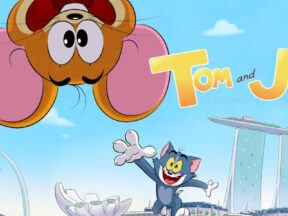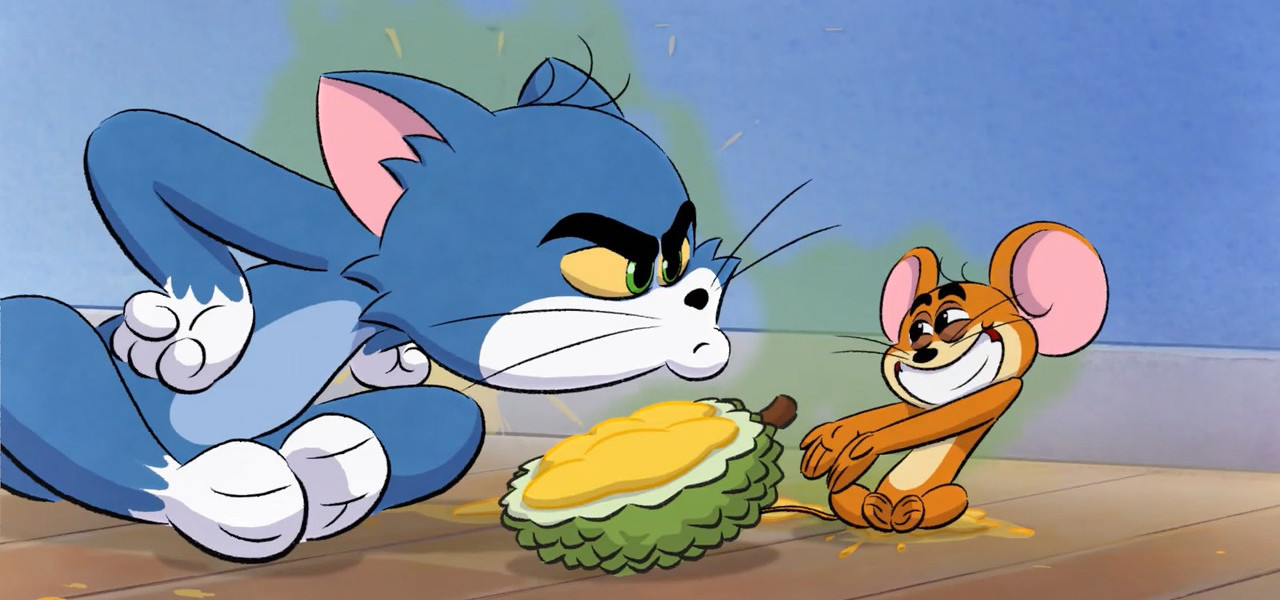
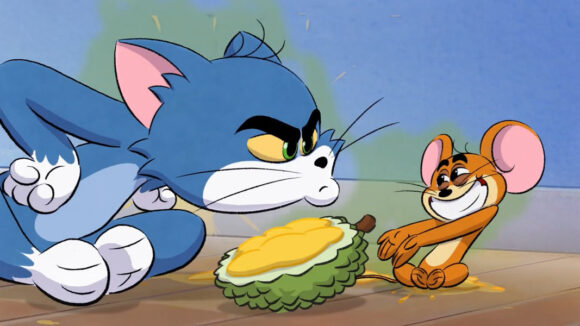
Relocating Animation’s Most Famous Cat-And-Mouse Duo To Asia: How Tom And Jerry Ended Up In Singapore
Animation’s most famous cat-and-mouse rivalry will resume this weekend in Southeast Asia, where a new series of Tom and Jerry shorts debuts tomorrow, October 21. It’s one of the freshest updates to the characters in recent memory, capturing the feisty vigor of Bill Hanna and Joe Barbera’s creations, while effortlessly incorporating new elements (who knew Tom was a durian fan!).
The seven shorts will be available in Southeast and South Asia, Australia, and New Zealand on Cartoon Network, as well as HBO Go in Southeast Asia. Globally, the three-minutes cartoons will be available via the Cartoon Network Asia Youtube channel.
The updated series features Tom and Jerry’s traditional back-and-forth antics, only this time in front of the most recognizable landmarks of Singapore. Last year, Warner Bros. Discovery (WBD) released a series of T&J shorts in Japan, but despite being designed in a kawaii style, the adventures took place in a fantasy setting. That makes the new Singapore adaptation the first localized version of the iconic duo.
A pilot was released in August, and can be seen below.
The shorts were produced locally in Singapore (Chips and Toon, Robot Playground Media) and India (Aum Animation Studios). Vivek Bolar was lead director on the shorts.
We recently caught up with the series’ producer, Carlene Tan, to learn more about the show and how her team localized Tom and Jerry. Tan, who is also WBD’s director of original production and development for kids in Asia Pacific, is in charge of greenlighting and overseeing production of kids content for the WBD portfolio in the APAC region.
Cartoon Brew: What was your introduction to Tom and Jerry? Is this type of slapstick physical comedy and broad humor popular in Singapore, or is it considered an American style of comedy?

Carlene Tan: I’m sure that it was the same for kids my age all around the world – Tom and Jerry was something that was just always there growing up. What we all loved about the show was that it also made our parents and even our grandparents laugh. It’s truly multi-generational.
Living in Singapore, when you were waiting at the dentist, waiting to collect your passport, or at the hairdresser, it was on the screens. Everybody watched it, and everybody enjoyed it. With such a simple premise, what’s not to love?
It’s definitely not just an American brand of humor. Physical comedy works well across all cultures, so it’s not surprising Tom and Jerry travels so well. Whether the audience is Chinese, Korean, Japanese, or Indian, slapstick makes everyone laugh. It’s universal.
Could you explain more about the concept of localization? These cartoons are set in Singapore, but they also have entertainment value to someone who may not be in Singapore. What specific elements did you try to localize to Singapore, and what was intended to be universal for South and Southeast Asia markets?
At Cartoon Network, we often ask ourselves how we can make our shows and IP even more relevant for our region. Tom and Jerry is clearly a franchise that resonates everywhere already, but we started to wonder how it would look with Asian influences – destinations, locally recognizable backdrops, and environments.
We’re all familiar with Tom and Jerry living in a spacious American suburban house, but how would they look and behave in a city like Singapore, where most of the population doesn’t live in housing like that?
Then there were the props. You can see from our pilot episode that instead of a baseball bat, which is what you’d perhaps expect to see, Tom has a cricket bat, which he uses in a very specific and authentic way. We hope that these small touches will be appreciated by fans in South and Southeast Asia.

Of course, we also had to think carefully about the characters themselves. What would Tom Cat and Jerry Mouse from Asia look like? In this region, the characters we like are often “cuter” in appearance. So, we made them a little bit rounder and cuter, with slightly bigger eyes.
There are challenges in all forms of storytelling, but for this project, we were constantly thinking about what we could use, what kind of environments to use, and what kind of gags would work. Also, what can we make that would be uniquely representative and authentic from this region?
We asked these questions constantly at every step of production, from story to design. Even something as simple as what Tom would be drinking in a situation. Would it make sense for him to be drinking that in Singapore?
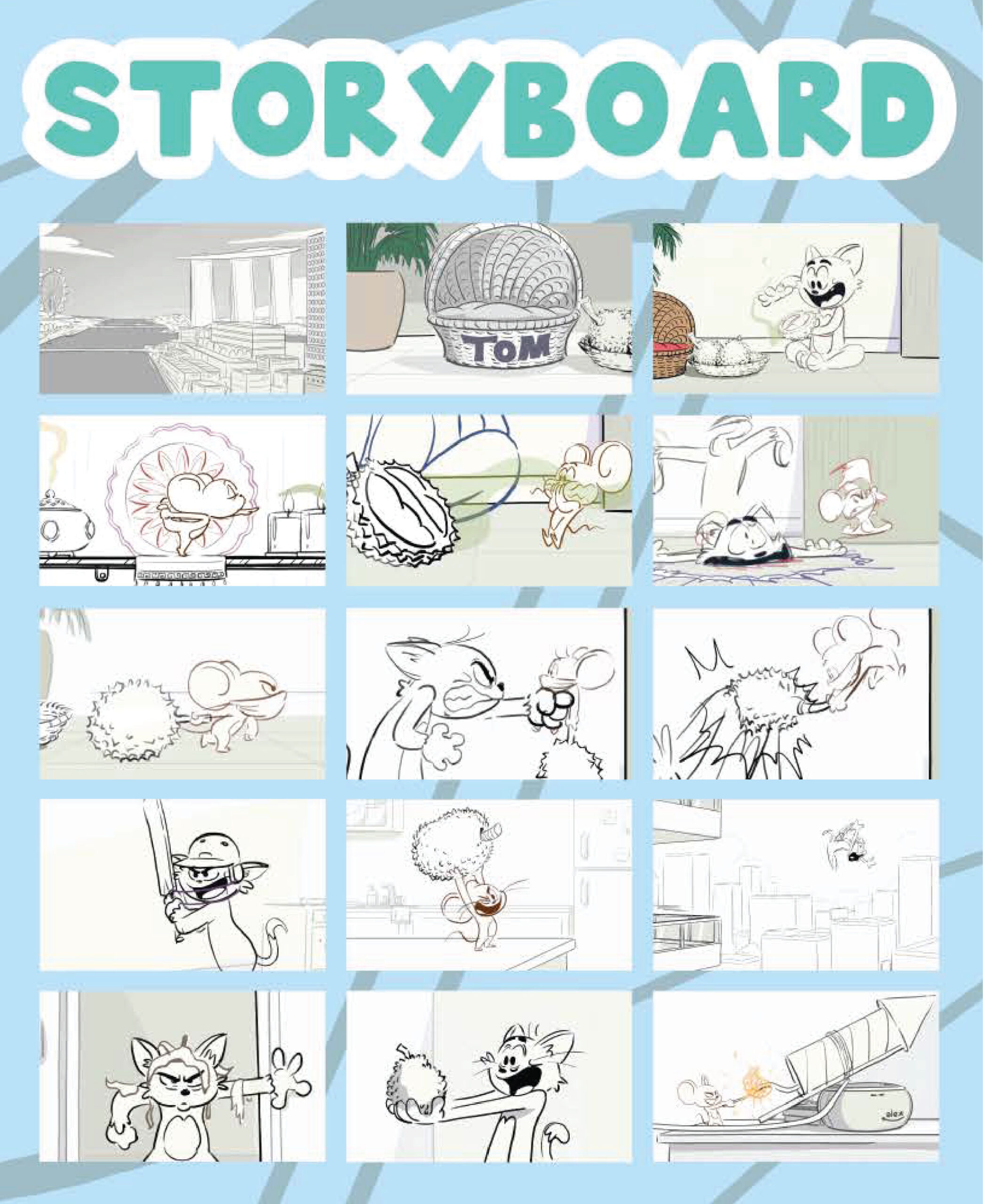
These cartoons capture the originals’ spirit – the gags are funny, the poses are solid, and the timing lands every time. What process did you go through to ensure this faithfulness to the spirit of the originals?
Thank you. Something that the creative team, all of us, really loved were some of the earliest Tom and Jerry episodes from the 1950s and 1960s. That particular style of physical humor was what we were going after with our series.
Its success is definitely down to the animation team. Aum Animation in Mangalore, India, was the one that ensured that the timing was spot on. We’d go back and forth, over and over again, to make sure it was just right. We all watched a lot of old Tom and Jerry to understand the mechanics of the best gags but also to make sure we weren’t rehashing old jokes or situations.
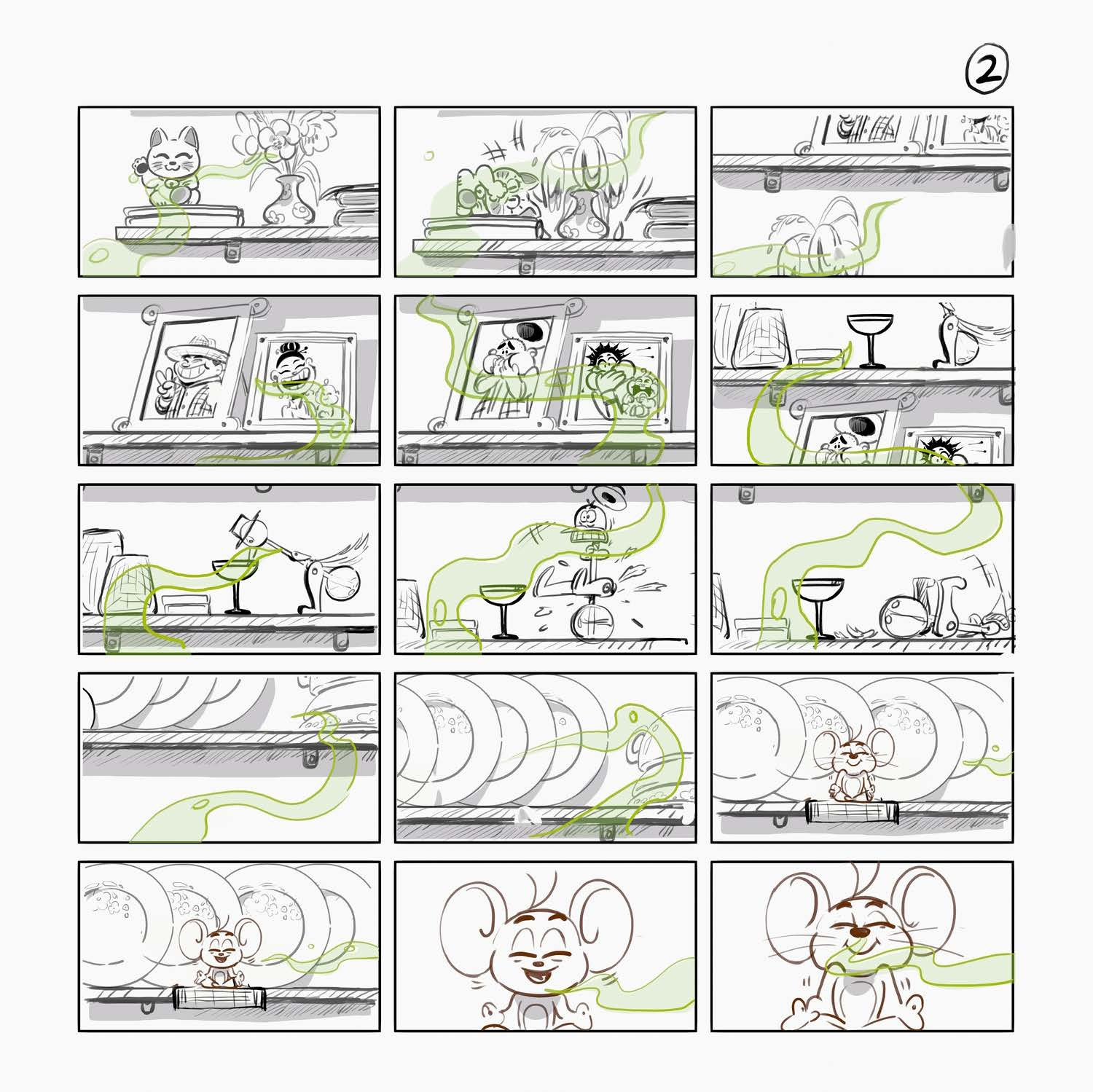
Conversely, in what ways did you update the look and the feel of the show?
We drew inspiration from the source material, but it was also important that the series feel fresh and modern. Pacing was probably the most obvious way. Our Tom and Jerry move a lot faster than in the originals.
Another thing that we really loved about the originals was the music. It’s all about that big band, jazzy sound that punctuates all the sequences. We wanted to bring that in but also have an Asian flavor added to the mix. We brought in a team, also from India, called Tuning Folk, who had previously worked on our Cartoon Network original, Lamput.
It wasn’t easy to achieve – and we had some sleepless nights – but their compositions have a fusion of that Western jazz feel and melody and Asia, using local instrumentation. We used the sitar, tabla, gamelan, and gu zheng for string instruments and percussion.
How was production set up? Was there a conventional tv pipeline for this series, or was there a specialized pipeline custom-designed for the production?
The whole project was a very collaborative journey. In my career, the best shows I’ve worked on are the ones where everybody, from pre-production to production to post-production, is empowered and able to share ideas.
Because this series is set in Singapore, the stories, designs, and art direction came from both Chips and Toon and Robot Playground. Our Singaporean artists were the ones who had a plethora of ideas for the production team on Tom’s drink, for example, but also on the kind of plants and what’s in the background.
We had story rooms where the teams all got together and just threw out ideas until we had that story seed we could take to the animation team. They’d then thumbnail the gags and bring them all together.
To create the pipeline, there was a fair bit of experimentation along the way. We were learning from episode to episode about how we could streamline and what we wanted to do better for the next one. It was all about collaboration.
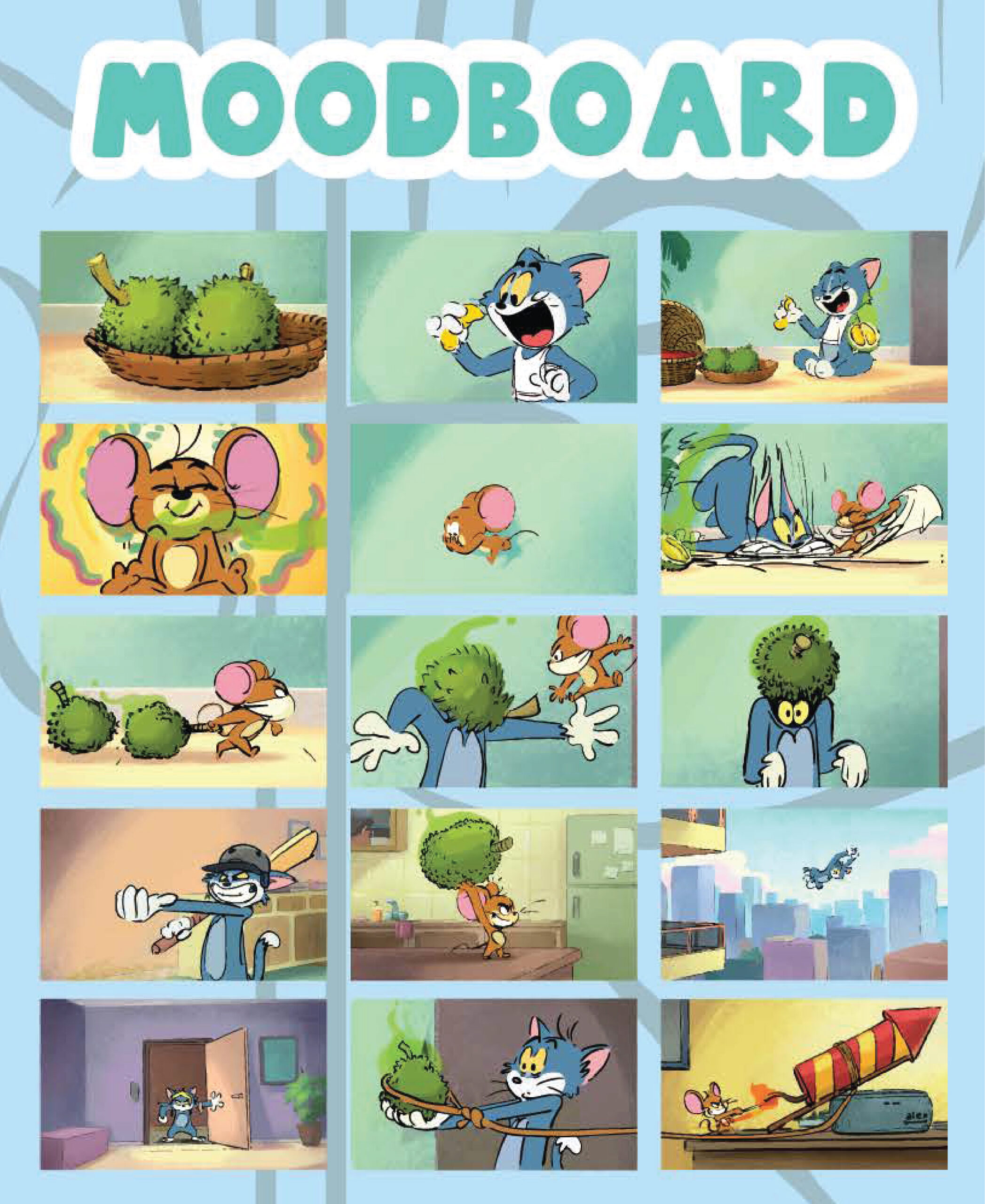

.png)
